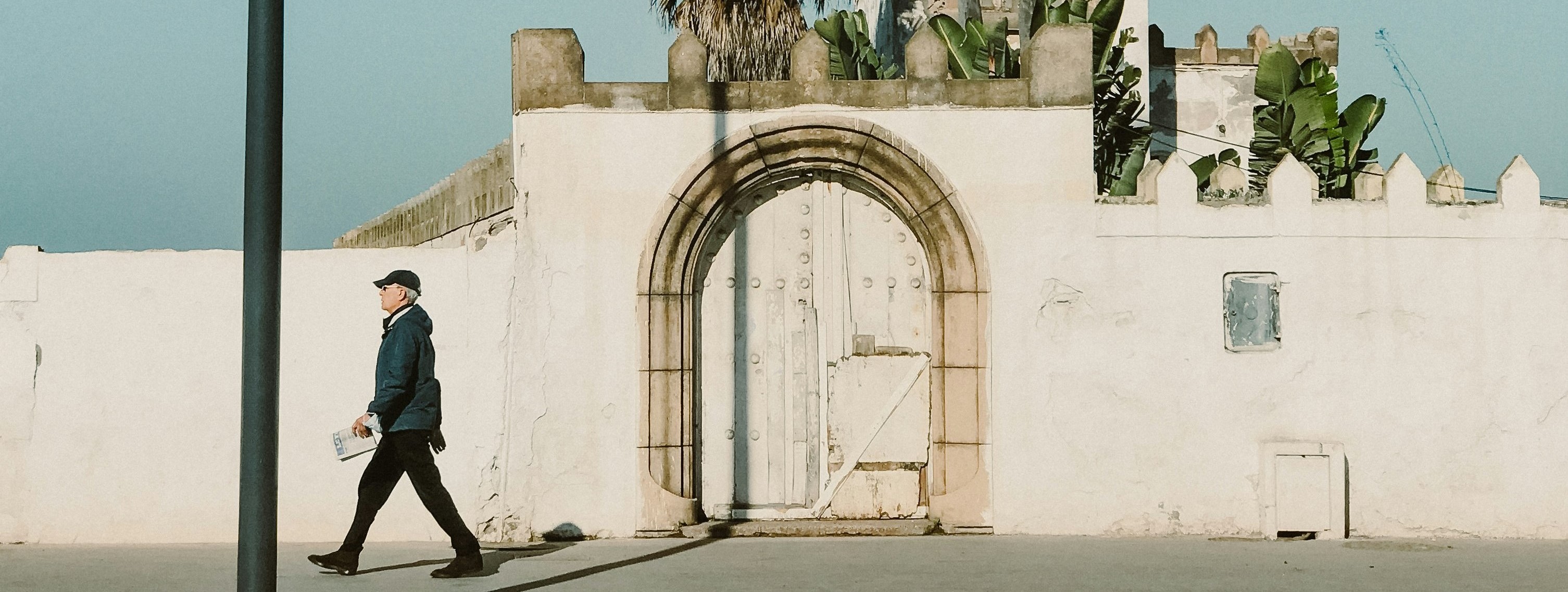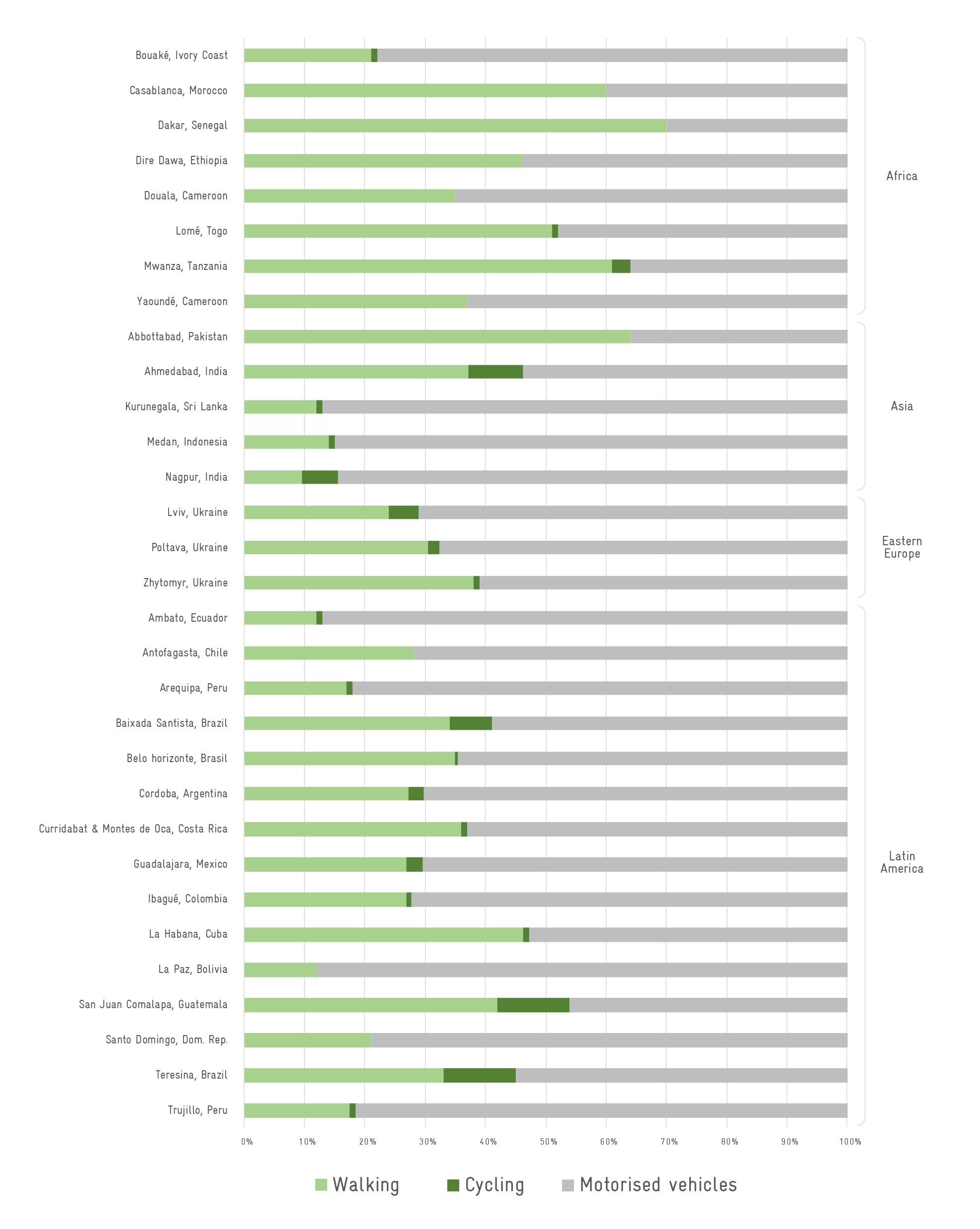Footsteps to the Future: Walking and Cycling Initiatives in MobiliseYourCity Cities

Walking is a crucial mode of transportation for many MobiliseYourCity member cities. Cities like Casablanca, Morocco and Dakar, Senegal, report that a substantial percentage of their trips, approximately 60% and 70% respectively, are made by foot. In Kochi and Nagpur, India, where walking accounts for a relatively lower proportion of modal share (12% and 10%, respectively), it remains a crucial mode for individuals to access their desired destinations, mainly where connectivity with transport modes or public transport lines is poor or suboptimal.
32 of our member cities have some level of information on modal share, of which 26 have data specific to walking and cycling. On average, more than a quarter of daily trips are made by private vehicles (motorbikes, cars).

The SUMP approach ensures that walking is not overlooked in urban transport planning. For example, data collected for the Dire Dawa, Ethiopia SUMP show that the modal share of walking had been strongly underestimated in previous projects and is accounting for 46% of the city’s daily trips. Dire Dawa’s SUMP aims at keeping the current modal share of active modes while making the city entirely walkable.
Two main reasons might explain the low financing for active modes and improved roads identified by SUMPs and NUMPs. Firstly, road infrastructure is usually financed by the domestic budget of local or national governments, and the MobiliseYourCity Secretariat does not have access to data on secured domestic financing after completing technical assistance for SUMP preparation. Secondly, financing walking and cycling may face barriers to international funding due to low financial volume, difficulty justifying financial returns on investment, or insufficient experience or capacity for these modes. MobiliseYourCity partners recognised this challenge and have made supporting implementation and financing for walking and cycling a key priority since 2020.
Just as notably, our standard SUMP and NUMP Terms of Reference recommend considering walking during investment planning. 21 completed or nearly completed MobiliseYourCity SUMPs, and NUMPs have identified an investment need for 799 million euros to improve walking or cycling infrastructure. Antofagasta and Arequipa are alone contributing to most of this figure, after including walking action plans in their SUMP for 400 million euros. In these two cities, local or national domestic financing should cover a significant share of the cost estimates. However, only 25 million euros or 4% of the total identified investment need for walking and cycling, cities and countries have already secured financing from international sources.
MobiliseYourCity Implementing Partners are using walking and cycling interventions to strengthen local institutional capacities on sustainable mobility. These projects train transport planners who traditionally are not well equipped to carry out walking and cycling interventions, as considerations are needed beyond levels of services and road capacity centered in traffic. For example, the Euroclima+ programme has supported Havana, Cuba; La Paz, Bolivia; Puebla, Mexico; Ibague, Colombia; Curridabat and Montes de Oca, Costa Rica to implement pilot projects on walking and cycling, including cycling parking and lanes, bike sharing systems, and improving accessibility to public spaces for pedestrians.
In some places the investment in active modes is what initiates a more strategic, and comprehensive urban mobility planning process. For example, in Antananarivo the AFD has allocated 10 million euros to finance a walking and cycling programme. The programme includes upgrading 50 km of urban roads to improve walkability and safety, enhancing business areas and school accesses, upgrading paratransit stops and related accesses, improving public spaces through tactical urbanism, constructing cycling lanes, developing a SUMP for Antananarivo, and building capacities for the local authorities.
MobiliseYourCity’s support for active mobility continues after the preparation of a SUMP or NUMP. As part of the AIPMUS project in Santo Domingo, Dominican Republic (technical assistance to implement the SUMP), the city is developing more than 40 km of cycling lanes and a bike-sharing system to increase public transport demand. In Yaoundé, Cameroon, following the SUMP adoption and with the support of MobiliseYourCity, local authorities expect to reallocate road space to develop segregated, safe and continuous sidewalks, connected to increase accessibility to public transport. Safe pedestrian crossings with refuges will be implemented, and organised taxi pick-up/drop-off zones will be piloted.
The Partnership keeps on encouraging other member cities and countries in developing SUMPs with a strong focus on walking and cycling, considering the high modal share such modes have, especially in Africa and Latin America.